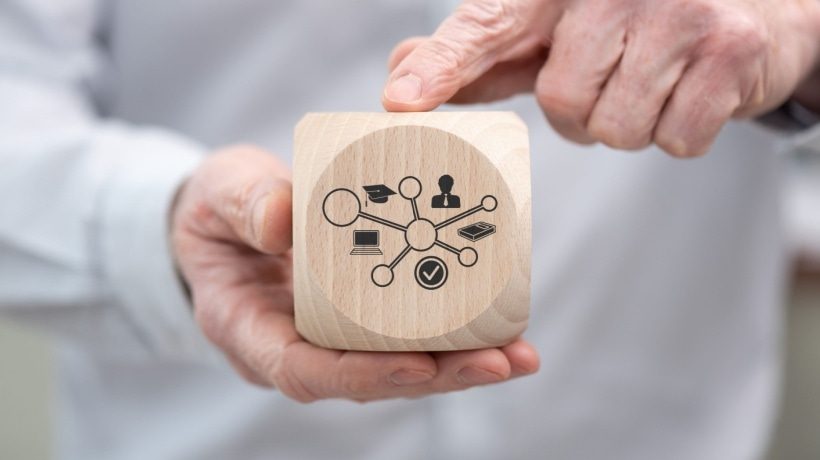Launching Development Initiatives Based On Workforce Competencies
Organizations are now shifting from standard training programs to focusing on developing the competencies of their workers. With this method, workers acquire the information needed as well as the skills and practices required for each job. WEF recently found that in 2027, 50% of employees will require upskilling, and organizations that use competency frameworks often keep and advance their top talent. The article explains five ways companies can adopt competency-based workforce development and prepare workers for the future.
A Step-By-Step Guide On Competency-Based Workforce Development
1. Define Clear Competency Frameworks Aligned With Business Goals
Developing an effective and targeted framework is the starting point for a competency-based program. Proficiency in a job requires skills, knowledge, abilities, and behavior. These should be supported by the organization's mission, values, and major objectives.
It is important to first analyze jobs according to roles and consult with leaders, department heads, and HR workers to identify what abilities are needed for each type of work. While workers in customer service are often expected to be empathetic and good at resolving disputes, individuals in data analysis should focus on statistical modeling and displaying information in easy-to-use graphics. Observable actions and their proficiency for each competency should be explained, for example, as beginner, intermediate, and advanced.
As cited by the Society for Human Resource Management (SHRM), businesses with effective competency frameworks may improve employees' performance by up to 17%. When an organization builds this foundation, its decisions in hiring, training, evaluation, and promotions always remain focused on what the business requires.
2. Integrate Competency Development Into The Learning Ecosystem
After defining the competencies, you should make sure they are included in all areas of your Learning and Development system. Conventional training programs may not be meaningful and can fail to show results. This issue is addressed in competency-based workforce development by connecting programs to the skills and abilities employees must have.
Create a link between your learning materials, including online classes, workshops, programs with mentors, and simulations, to the main skills you want to develop. An example is an employee learning to improve "strategic thinking" by participating in courses, studying cases, and undertaking training tasks.
It results in tailored learning and focuses on students' test outcomes. According to LinkedIn's 2024 Workplace Learning Report, 91% of L&D professionals believe that focusing learning programs on business objectives, especially developing the right skills, helps improve the performance of the organization.
3. Utilize Skills Assessments And Gap Analyses
To effectively implement competency-based workforce development, it's crucial to measure where employees currently stand and what development they need. Skills assessments, behavioral interviews, 360-degree feedback, and on-the-job evaluations can help identify individual strengths and competency gaps across teams.
A skills gap analysis compares current employee capabilities with the competencies required for current or future roles. This process can be automated using learning platforms integrated with analytics dashboards. For instance, if a project manager lacks the "risk management" competency, the system can flag the gap and recommend targeted interventions.
A recent McKinsey report found that companies using skill-based assessments to guide training decisions saw a 42% improvement in employee performance within 12 months. Regularly updating this analysis ensures that your workforce development strategies remain agile and aligned with evolving business needs and technological trends.
4. Implement Individual Development Plans (IDPs) With Measurable Outcomes
To move from insight to action, each employee should have a structured and personalized Individual Development Plan (IDP). An IDP outlines the competencies an employee needs to develop, the methods they will use to acquire them, and a timeline for achieving measurable results.
Competency-based IDPs are not just about attending a few training sessions—they're about intentional, outcomes-driven development. For instance, a sales executive aiming to build "negotiation" competency might have milestones such as completing a certified negotiation course, participating in mock deal simulations, and demonstrating improvement in quarterly sales conversions.
Managers play a key role in this process by offering mentorship, regular feedback, and progress reviews. Companies that incorporate IDPs into their competency strategy are 30% more likely to retain high-potential employees, according to research by Gallup. Moreover, employees with IDPs feel more accountable and motivated when they see clear growth pathways tied to real-world competencies.
5. Monitor, Evaluate, And Evolve The Development Strategy
Competency-based development of the workforce needs to be reviewed and updated on a regular basis. Firms should often monitor how staff competency adds value to the work being done, the productivity rate, and company results.
It is important to pay attention to progress in skill levels, employee involvement, the rate of senior staff members becoming trainers, and how much training is worth. HR and L&D teams can follow staff training by using the data collected from such platforms. If only 40% of workers are developing their communication ability as found by data, it could signal that the organization should improve its learning offerings.
Involving employees, managers, and business leaders in feedback ensures any necessary updates can be made to skills, programs, and workforce rules. Adaptive competencies and KPIs, according to the World Bank, can support workers in tough economic environments.
Using a continuous improvement strategy, organizations can ensure their attempts at workforce development through competencies remain up-to-date and effective.
Conclusion
Using a competency-based approach for workforce development means investing in people's skills, success, and new ideas for the future. When a company names the main areas of competence, matches them with available learning resources, checks for talent gaps, designs useful development plans, and regularly reviews how far staff have come, people are motivated to improve and thrive in their place of work.
Nowadays, those in the workforce must understand what is needed and also have the skills to apply it. Competency-driven development provides a workable, easy-to-measure, and adaptable solution for this problem. Those who implement this strategy now will be at the forefront in the future.










